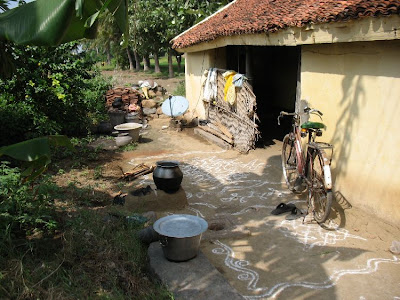To find out about the current situation of the Nithyananda scandal, read below:
“The sex scandal allegedly involving Swami Nithyananda and a Tamil film star Ranjitha got even murkier on Thursday with a web of fresh charges and sinister scenarios popping up, even as the self-styled godman is believed to be “somewhere in the Kumbhamela festival”, either in Varanasi in Uttar Pradesh or in Puri in Orissa.
Nearly two days after a Tamil TV channel beamed amorous pictures of the sexual intimacies that landed both the protagonists in a soup, the ‘Nithyananda Dhyanapeetam’, the worldwide institution for meditation and harmony the Godman founded, broke its silence this evening as his lawyer claimed that the pictures were not that of Nithyananda.
Hours after having moved a civil suit here, the spiritual Guru’s lawyer, M Sreedhar told a press conference amid near chaos in the hall, the whole episode was part of a “much larger conspiracy” to malign both Nithyananda and his institution by projecting his “morphed” images with an actress.”
Click here to continue reading article
There are several websites online which have been set up to 'debunk' the mystique of Nithyananda. One of these websites provides intriguing and curious information which perhaps could go some way towards explaining how this still very young Swami has dug himself into such a very deep hole.
And one particularly fascinating posting (extract below) discusses Nithyananda’s apparent usurpation of power intended for different aspects of the Divine.
“Oh, yes, there's your Vedic temples. That should be a strength we can build on. But, then again, there's those mantras where you inserted your name in them, those idols that are specifically made in your image so people can worship just to you, while the other legitimate Hindu deities you renamed with your name attached to them, your thrones have images of Divine Deities right on the seat so you sit firmly on top of them, etc. Gee, 'Swami' Nithyananda, we thought that your Vedic Temples might be a strong point, but then again, maybe not.”
“The sex scandal allegedly involving Swami Nithyananda and a Tamil film star Ranjitha got even murkier on Thursday with a web of fresh charges and sinister scenarios popping up, even as the self-styled godman is believed to be “somewhere in the Kumbhamela festival”, either in Varanasi in Uttar Pradesh or in Puri in Orissa.
Nearly two days after a Tamil TV channel beamed amorous pictures of the sexual intimacies that landed both the protagonists in a soup, the ‘Nithyananda Dhyanapeetam’, the worldwide institution for meditation and harmony the Godman founded, broke its silence this evening as his lawyer claimed that the pictures were not that of Nithyananda.
Hours after having moved a civil suit here, the spiritual Guru’s lawyer, M Sreedhar told a press conference amid near chaos in the hall, the whole episode was part of a “much larger conspiracy” to malign both Nithyananda and his institution by projecting his “morphed” images with an actress.”
Click here to continue reading article
There are several websites online which have been set up to 'debunk' the mystique of Nithyananda. One of these websites provides intriguing and curious information which perhaps could go some way towards explaining how this still very young Swami has dug himself into such a very deep hole.
And one particularly fascinating posting (extract below) discusses Nithyananda’s apparent usurpation of power intended for different aspects of the Divine.
“Oh, yes, there's your Vedic temples. That should be a strength we can build on. But, then again, there's those mantras where you inserted your name in them, those idols that are specifically made in your image so people can worship just to you, while the other legitimate Hindu deities you renamed with your name attached to them, your thrones have images of Divine Deities right on the seat so you sit firmly on top of them, etc. Gee, 'Swami' Nithyananda, we thought that your Vedic Temples might be a strong point, but then again, maybe not.”












































